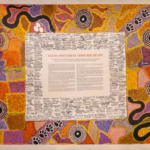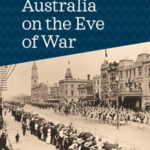Today marks the 12th anniversary of Stumbling Through the Past. I thought that there could be no better way of marking the occasion by writing about what I think will come to be seen as a significant moment in the process of reconciliation in Australia. The Uluru Statement of the Heart is a profound call from Aboriginal and Torres Strait Islanders from all over Australia … [Read more...] about The Uluru Statement from the Heart
Aboriginal
Topics that Interest Historians in Australia
The annual gathering of historians in Australia is big. This year there were nearly 300 papers delivered in concurrent sessions. Yesterday I blogged about the keynotes and plenary panels. Today I will have a look at the masses of papers delivered by over three hundred historians. Before you recoil in horror at the prospect of a very lengthy post, I assure you that I will be … [Read more...] about Topics that Interest Historians in Australia
Review: South Australia on the Eve of War
South Australia on the Eve of War paints a picture of life in South Australia before the outbreak of World War I. Its ten chapters, each written by a different historian, are easy to read overviews of various aspects of life in South Australia before the outbreak of war. These chapters provide an introduction to topics such as South Australian politics, families, the lives of … [Read more...] about Review: South Australia on the Eve of War
Islamic Museum of Australia
“I would like to visit the Islamic Museum,” said my mother when I visited her in Melbourne last year. My mother likes visiting art exhibitions, but she doesn’t visit many museums. Her request surprised me. But I shouldn’t have been surprised. Like many people she has been appalled at the anti-Muslim rhetoric which is too often heard nowadays. She has always been interested in … [Read more...] about Islamic Museum of Australia
Challenge Completed!
One of the joys after I finished my history degree was reading a book from cover to cover. This is the way most authors expect people to read their books, but when studying or working I found the pressure of deadlines meant that I simply mined a book for information through the index or a reference in another article or book. Worse still, my reading was terribly skewed towards … [Read more...] about Challenge Completed!


